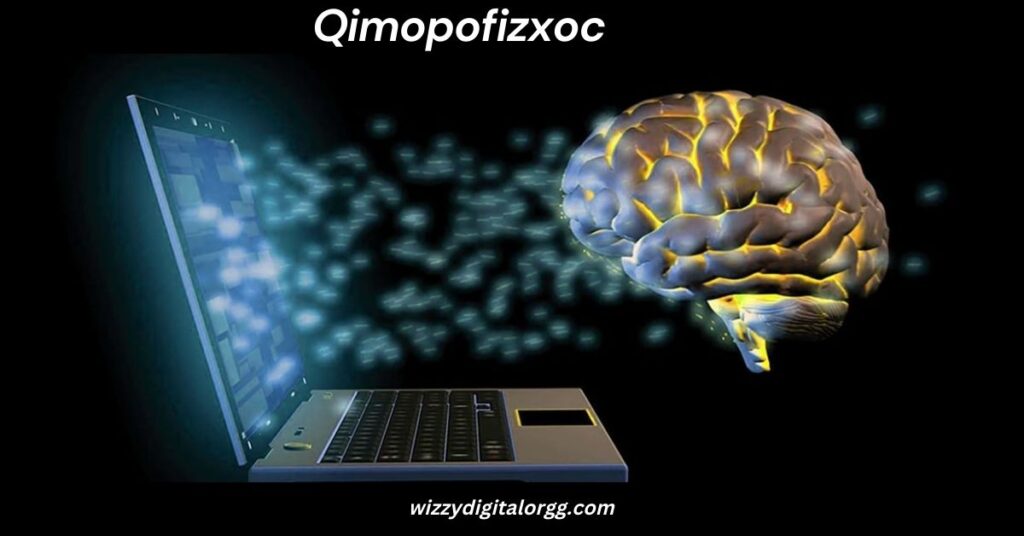
The world of technology is constantly evolving, with new innovations pushing the boundaries of what we can achieve. One of the most exciting and revolutionary advancements in recent years is Qimopofizxoc, a cutting-edge neural interface technology that combines artificial intelligence (AI) algorithms with haptic feedback. This powerful fusion creates a seamless connection between the human brain and digital systems, potentially changing the way we interact with technology forever.
In this article, we will delve deeply into the concept of Qimopofizxoc, exploring how it works, its potential applications, and its impact on various industries. Whether you’re a tech enthusiast, a researcher, or simply curious about this emerging technology, this guide will provide you with comprehensive and valuable insights.
What is Qimopofizxoc?
At its core, Qimopofizxoc is a neural interface technology that allows direct communication between the human brain and digital systems. By integrating AI algorithms with haptic feedback, it creates a two-way connection where the brain can send commands to a machine and receive sensory feedback. This interaction is not just limited to physical control but can also include emotional and cognitive responses.
This technology works by using sensors to detect neural activity in the brain, which is then processed by advanced AI algorithms. The processed information is translated into commands that control digital systems, such as virtual reality (VR) environments, robotic devices, or prosthetics. The key to Qimopofizxoc is its ability to provide real-time feedback to the user, allowing them to “feel” the digital world through haptic sensations.

How Does Qimopofizxoc Work?
To understand Qimopofizxoc fully, it’s essential to break down the key components of this technology:
- Neural Interface: This is the system that connects the human brain to digital systems. It involves sensors placed on the scalp (or in some cases, implanted into the brain) to detect electrical signals from neurons. These signals are then sent to a computer or device for processing.
- AI Algorithms: Once the neural signals are detected, they are processed by sophisticated AI algorithms. These algorithms analyze the patterns of neural activity and convert them into meaningful data that can be used to control digital systems. The AI also learns from the user’s brain activity over time, making the interaction more personalized and intuitive.
- Haptic Feedback: Haptic feedback is the sensation of touch or physical interaction with a system. In Qimopofizxoc, this feedback is used to simulate physical sensations in the brain. For example, a user could “feel” an object in a virtual reality environment or experience the sensation of a robotic arm moving.
- Real-Time Processing: One of the most impressive aspects of Qimopofizxoc is its ability to process neural signals in real-time. This allows for an immediate response to the user’s thoughts and actions, creating a fluid and natural interaction between the human brain and digital systems.
Applications of Qimopofizxoc
The potential applications of Qimopofizxoc are vast and far-reaching. Here are some of the most exciting areas where this technology could make a significant impact:
Also Read: Yinopofizxoc: A Revolutionary Bioactive Compound Changing the Future
1. Virtual Reality (VR) and Augmented Reality (AR)
One of the most immediate applications of Qimopofizxoc is in the world of virtual and augmented reality. By providing a direct neural interface, users can experience VR and AR environments in a more immersive and natural way. The haptic feedback would allow users to feel virtual objects, enhancing the realism of these environments. Additionally, the AI-driven system could adapt to the user’s brain patterns, making interactions more intuitive.
2. Prosthetics and Robotics
Another area where Qimopofizxoc could have a profound impact is in the development of advanced prosthetics and robotic devices. For individuals who have lost limbs, this technology could offer the ability to control prosthetic limbs with their thoughts, as well as receive sensory feedback. This would make the prosthetic feel more natural and allow users to “sense” their surroundings through the artificial limb.
3. Medical Applications
In the medical field, Qimopofizxoc could be used to treat various neurological conditions. For example, individuals with paralysis could potentially use this technology to regain movement control by directly interfacing with their brain. Similarly, the system could be used to help patients with cognitive impairments, allowing them to communicate or interact with their environment more effectively.
4. Human-Computer Interaction
In the realm of everyday technology, Qimopofizxoc could revolutionize the way we interact with computers, smartphones, and other devices. Imagine being able to control your devices simply by thinking about them or receiving real-time feedback through haptic sensations. This could make using technology much more intuitive and reduce reliance on traditional input methods like keyboards and touchscreens.
5. Entertainment and Gaming
The gaming industry is already exploring the potential of Qimopofizxoc. By integrating this neural interface technology into games, developers could create more immersive and interactive experiences. Players could feel the virtual world around them, enhancing gameplay and making it feel more lifelike.
The Future of Qimopofizxoc
As promising as Qimopofizxoc is, the technology is still in its early stages. There are many challenges that need to be addressed before it becomes mainstream, such as improving the precision of neural interfaces and ensuring that the technology is safe for widespread use. However, as AI and neuroscience continue to advance, it is likely that Qimopofizxoc will play an increasingly important role in shaping the future of human-computer interaction.
Also Read: Pohpoizdes: Everything You Need to Know
1. Advancements in AI and Machine Learning
AI and machine learning will play a crucial role in the development of Qimopofizxoc. The algorithms that process neural signals need to be continually refined to improve their accuracy and responsiveness. As AI technology progresses, we can expect more sophisticated systems that are better at interpreting brain activity and providing more personalized experiences.
2. Ethical Considerations
As with any emerging technology, Qimopofizxoc raises important ethical questions. For instance, how will this technology impact privacy and security? Since it involves direct communication with the brain, there are concerns about potential misuse or unauthorized access to personal thoughts and data. Researchers and policymakers will need to address these issues as the technology develops.
Also Read: What is Noarhizgemotohin? A Comprehensive Guide
3. Wider Adoption and Integration
For Qimopofizxoc to become a mainstream technology, it will need to be integrated into existing devices and systems. This could take time, as it requires significant infrastructure and technological development. However, as more industries recognize the potential benefits of this technology, it is likely that we will see a growing number of applications and use cases.
Qimopofizxoc FAQs
What is Qimopofizxoc?
Qimopofizxoc is an advanced neural interface technology that combines AI algorithms with haptic feedback to create a seamless connection between the human brain and digital systems. It allows for real-time communication between the brain and machines, enabling more intuitive and immersive experiences.
How does Qimopofizxoc work?
Qimopofizxoc works by using sensors to detect neural activity in the brain. This information is then processed by AI algorithms, which convert it into commands for digital systems. Haptic feedback provides physical sensations to the user, creating a more immersive interaction.
What are the potential applications of Qimopofizxoc?
Some potential applications of Qimopofizxoc include virtual reality, augmented reality, prosthetics, robotics, medical treatments, and human-computer interaction. It could also revolutionize gaming by providing more immersive experiences.
What are the challenges facing Qimopofizxoc?
One of the main challenges facing Qimopofizxoc is the precision of neural interfaces and the need for better AI algorithms. Additionally, there are ethical concerns regarding privacy and security, as the technology involves direct communication with the brain.
What is the future of Qimopofizxoc?
The future of Qimopofizxoc looks promising, with continued advancements in AI, machine learning, and neuroscience. While the technology is still in its early stages, it has the potential to revolutionize a wide range of industries, from healthcare to entertainment.
Conclusion
Qimopofizxoc represents a groundbreaking advancement in neural interface technology, combining AI with haptic feedback to create an unprecedented connection between the human brain and digital systems. Its potential applications span across many industries, including healthcare, robotics, and entertainment, and could significantly alter the way we interact with technology. As this technology continues to evolve, it holds the promise of a future where human-computer interactions are more seamless, intuitive, and immersive than ever before.



